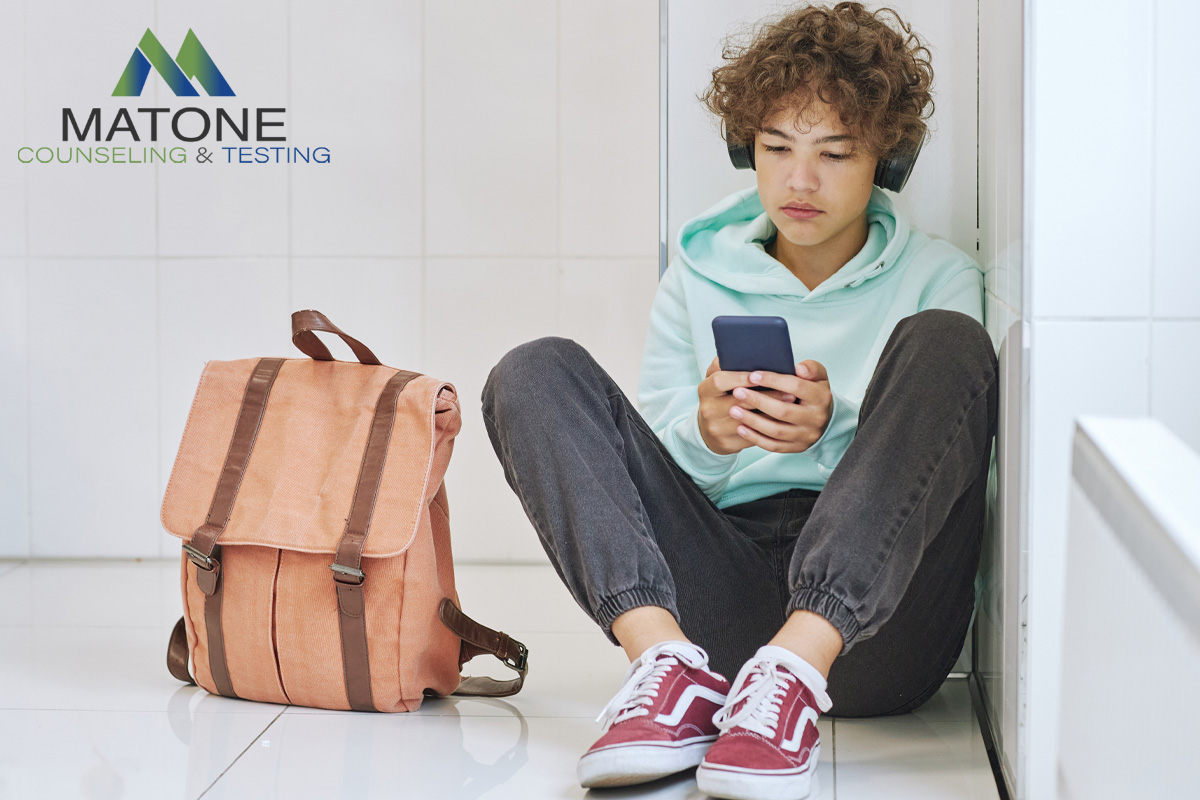Smartphones and social media have transformed the way we live—but for children and adolescents, that transformation may come at a serious cost.
Research increasingly shows that excessive smartphone use can lead to higher rates of depression, anxiety, insomnia and even suicidal ideation in teens. With new policies emerging to create phone-free schools, parents and mental health professionals are asking a critical question: How much phone time is too much for kids?
Why Are Smartphones a Mental Health Risk for Teens?
The link between adolescent smartphone use and mental health issues is no longer speculative. In his 2024 book The Anxious Generation, social psychologist Dr. Jonathan Haidt presents alarming data: since 2013, suicide rates among U.S. teens have increased by 67%, and major depressive episodes among adolescents have surged by 52%. Haidt argues that this mental health crisis coincides with the rise of smartphones and social media.
Studies support this connection. A 2019 meta-analysis (Sohn et al.) found that problematic smartphone use among young people is consistently associated with:
- Depression
- Anxiety
- Insomnia
- Stress
- Academic decline
The phenomenon now has a name: “brain rot.” Coined by researchers like Yousef et al. (2025), it refers to cognitive fatigue and mental decline from chronic exposure to low-quality, addictive online content—particularly on social media.
The Dark Side of Digital Life: What Are Kids Really Seeing Online?
Children and teens are regularly exposed to violent, sexual, and harmful content via their phones—content they wouldn’t typically encounter offline. According to the CDC, emergency room visits related to eating disorders in adolescent girls have doubled, driven in part by the toxic imagery and peer comparison fostered on apps like Instagram and TikTok (Lerman et al., 2024).
Social media platforms often become “toxic echo chambers,” especially for vulnerable youth. They can normalize and promote harmful behaviors including:
- Self-harm and suicidal ideation
- Eating disorders (e.g., pro-anorexia content)
- Cyberbullying
- Aggressive or violent behavior
Even well-meaning parental controls often fail to protect children, due to peer sharing, technical workarounds, and the addictive design of the platforms themselves.
How Many Hours Should Kids Be on Their Phones?
Dr. Haidt recommends no smartphones before high school and no social media before age 16 (ideally 18). Yet today, the average U.S. child spends up to 9 hours per day on a screen. Instead of playing outside, building independence, or learning from peers, children are increasingly sedentary, isolated, and emotionally dysregulated.
What Are Signs of Smartphone Addiction in Kids?
Symptoms of mobile phone addiction in children and teens may include:
- Withdrawal symptoms when the phone is taken away
- Tolerance (needing more screen time for satisfaction)
- Preoccupation with the phone
- Neglect of other activities (school, sports, social life)
- Inability to stop using, even when experiencing harm
If you’re wondering, “Is my child using their phone too much?”—the answer could be yes if these symptoms sound familiar.
How to Reduce Your Child’s Phone Use and Encourage Healthy Independence
- Swap Smartphones for Simpler Devices
Replace smartphones with tools like:
- Flip phones
- Gizmo Watch
- Bark Watch
- TickTalk Watch
- Gabb Phone or Gabb Watch
These alternatives allow for basic communication without unrestricted internet access.
- Establish Phone-Free Zones
- Make your child’s school day phone-free
- Set tech-free times at home (e.g., meals, bedtime)
- Encourage outdoor and peer-based play
- Delay Social Media
Avoid introducing platforms like TikTok, Instagram, or Snapchat until your teen is at least 16.
- Promote Independence and Free Play
Professor Camilo Ortiz’s “Independence Therapy for Kids” focuses on reducing parental over-involvement and encouraging autonomy. When kids play, explore, and face manageable risks, they build emotional resilience*—something smartphones can’t offer.
Can Therapy Help With Smartphone Addiction?
Yes. Cognitive Behavioral Therapy (CBT) is a highly effective, evidence-based treatment for adolescent depression and anxiety, especially when linked to screen overuse. CBT helps teens:
- Reframe negative thought patterns
- Build coping strategies
- Replace screen time with fulfilling offline activities
Child therapists can also support parents in setting healthy boundaries and reinforcing independence in their children.
FAQs
What age should kids get a phone?
Experts suggest delaying smartphones until high school, and social media until age 16 or later.
How many kids have phones in the U.S.?
As of 2023, over 85% of teens aged 13–17 have smartphones.
Why do parents give kids phones early?
Safety and communication are top reasons, but many regret the decision due to the unintended mental health impacts.
How do I stop my child’s phone addiction?
Start by reducing screen time, offering alternative devices, and seeking support from a child therapist if needed.
Final Thoughts
If you’re a parent wondering how to deal with your child constantly being on their phone, know that you’re not alone. With rising awareness, new school policies, and accessible therapies, we can help adolescents unplug from devices and reconnect with the real world.
Article by: Ari Barnaba

Ari Barnaba (she/her) is a graduate student studying Marriage and Family Therapy at Northcentral University. While she provides care to all clients, her training and focus is with couples and families on relational issues. Ari’s services are grounded in Bowenian Family Therapy and systemic theories. This means she facilitates clinical work to help clients balance personal autonomy and interactions with others. She guides clients to manage anxiety and move towards acceptance, healing, and growth. This also means that Ari sees anxiety, depression, and substance use issues as not just individual but relational concerns as well. She brings a non-judgmental and compassionate tone to her sessions, ensuring clients feel welcome and seen.
Ari has experience with adolescents and adults struggling with substance abuse, depression, anxiety, psychiatric disorders, and eating disorders. Working in substance abuse treatment for four years as a case manager, she ran multiple groups on coping skills, addiction, triggers, and recovery. She has a passion for utilizing evidence-based practices to support and help individuals, couples, and families. She believes in uniquely attending to each client’s needs.




